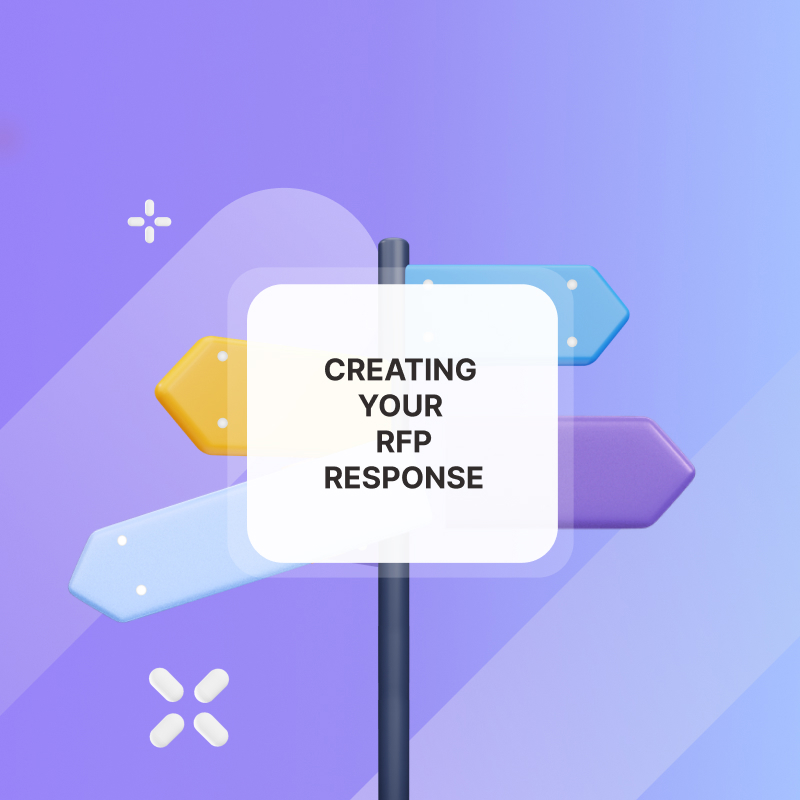
What works well for small businesses or large enterprises will not necessarily be successful for mid-market companies
Mid-market companies usually have 50-200 employees. However, they shouldn’t be mistaken as larger small businesses or smaller enterprises. They operate in the middle, the grey areas.
In this post, we will cover important things you should know about mid-market selling and strategies to navigate it
What Is Mid-Market Sales
Mid-market sales means selling to companies which have larger budgets than small companies but less bureaucracy than enterprises.
The midmarket can be tricky, and a one-size-fits-all sales process is often a recipe for disaster.
Companies that get the mid-market formula right enjoy market leadership, increased revenue and growth.
Things to Consider When Selling to Mid-Market Businesses
The small business approach is too small
Unlike small businesses, the mid-market customer needs more than “just a product.” They need a solution that will scale and grow alongside their business. Small businesses on the other hand just want competitive pricing, quick and painless solutions
The enterprise approach is too large
Very complex solutions with long implementation timelines won't work for a mid-sized customer without stalling their growth.
Target Audience
You'll be dealing with businesses ranging from 50 -200 employees and $50 million to $1 billion in revenue. If you originally targeted small businesses and want to move higher, you should determine if you can handle a larger capacity.
If you are used to targeting enterprise companies, you need to determine if you are ready to scale down some features to fit the mid-market needs.
Sales Cycle and Decision-Making:
Compared to small businesses, expect a more complex sales cycle. It is not as lengthy as enterprise deals but it will involve more than a single conversation. It usually involves an average of 2 - 6 decision makers but the approval process will be less bureaucratic than giant enterprises. You also have to be patient while being proactive at the same time.
Focus on Value
Mid-market companies have specific needs and a budget to address them. Demonstrating the value proposition of your product or service in a way that directly addresses their pain points is crucial.
Relationship Building
Nurturing relationships with key decision-makers is essential. This is a partnership-oriented approach, and building trust is key to closing the deal.
Sales Strategy
Sales reps should adapt and tailor their approach to each prospect's needs. Create personalised buying experiences and demonstrate that you understand their pain points.
Monitor their engagement with your sales content and be proactive in following up.
Pricing/Contract Flexibility:
Be prepared to offer flexible contract options that cater to the specific requirements of mid-sized businesses.
Benefits of selling to mid-market
There are several benefits of selling to mid-market businesses
- Larger Deals: Mid-sized businesses have bigger budgets than small businesses, which translates to more revenue for your company
- More Customers: Mid-market has more opportunities than you would get in the enterprise market
- Faster Sales Cycles: Decision-making in mid-market companies tends to be quicker compared to enterprises. This allows you to close deals faster and see a return on your sales efforts sooner
- Experienced Buyers: They have a clear understanding of their needs and realistic expectations, which can streamline the sales process
- Stable Customers: Mid-market companies are usually more financially stable. This means they are more likely to be long-term customers if your product or service continues to deliver value. Unlike smaller companies who may either not purchase again or would hardly purchase an upsell.
Challenges of Mid-market Sales
- Complex Buying Committees: Unlike smaller businesses with singular decision-makers, mid-market companies often have multiple decision-makers involved in the buying process. It is important to appeal to the priorities of each stakeholder because this can affect the sales process positively or negatively
- ROI Justification: Mid-market companies have more budget than smaller businesses, but they are still cost-conscious. You'll need to clearly demonstrate the return on investment (ROI) of your product or service to justify its price
- Longer Sales Cycles: The sales cycle with mid-market businesses is faster than enterprises. However, it is slower than smaller businesses due to the involvement of multiple decision-makers and the need for thorough due diligence.
- Increased Competition: Because mid-market businesses typically have more revenue and less bureaucracy during the sales process, you'll likely face more competition for deals compared to the small business market
- Customisation Needs: Mid-market companies often require some level of customisation to fit their specific needs. This can add complexity to the sales process and require you to scale up or scale down certain features.
Strategies for Mid-Market Sales
Understand their needs
- Mid-market companies often require you to be very attentive to their needs, especially during discovery. You should avoid handling them like a small business or an enterprise.
Tailor your product
- If your solutions were initially built for small businesses, you would have to find ways to upgrade your product or features to take care of their specific needs.
- If you have been dealing with enterprise companies, you should determine what can be stripped out or simplified to better meet the mid-market segment.
Tailor your sales Process
- Design a personalised buying journey and segment your sales content into milestones.
- Simplify and shorten the sales cycle by anticipating roadblocks in the sales process and addressing them proactively. This enables decision-makers to quickly reach a consensus
- Leverage AI and analytics to map out decision-makers, then tailor your sales content to align with their priorities
- Watch their buying behaviour and track buying signals even if they are silent
- Leverage AI to analyse your analytics and provide targeted follow-up actions
Pricing
Look at creative ways to price your solution for mid-market businesses. While mid-market businesses may have more budget than small businesses, they would still look out for things like discounts or payment adjustments. You can create custom pricing for each of them using Hubforce custom pricing templates
Onboarding
- Accelerate time to value by leveraging AI to build personalised onboarding systems.
- Leverage AI to track their progress and provide proactive support to prevent churn
- Use mutual action plans to clearly define the next steps in the sales process to keep the deal moving towards the closing stage
Sell Value
Understand their specific problems and demonstrate the ROI with an engaging narrative. It’s not about what you are selling but how it can transform their business. Present the right content to them at the right time and always add value.
Stay organised
Centralise all sales materials in a personalised workspace and ensure that both your sales team and the buying team have a single source of information. This ensures unified messaging. It also enables you or your sales team to easily measure the effectiveness of sales materials.
Also, if a decision-maker joins the sales process late, they can always catch up without pulling everyone back and slowing down the sales process.
Hubforce enables you to create personalised digital sales rooms and structure content according to the prospect's needs The best part is that these digital sales rooms can be built with AI and saved as a template for efficiency.
Set Up a Smooth Mid-market Sales Process with Hubforce
To successfully sell to mid-size markets, it is important to adopt personalised but repeatable sales processes.
A successful mid-market sales strategy is focused on solving problems and building long-term partnerships which will keep yielding continuous profits for you.
This is why a personalised and scalable buying journey is important.
Hubforce enables you to design a buyer journey that moves deals faster down the sales cycle. Centralise all sales content, track prospects' engagement and ensure that decision-makers are looking at the right content at the right time.
You can build digital sales rooms and structure relevant content in 30 seconds using Hubforce AI.
Watch every decision maker and proactively provide value to them at any stage of the buying cycle.
If you need help designing a personalised and efficient sales journey to move deals faster, click here to reach out to our co-founder Thomas Bellamy.
Alternatively, you can try out your first 5 digital sales rooms and sell to 5 customers for free.







![Best Practices for Customer Support [+Template]](https://hubforce-landing.fra1.digitaloceanspaces.com/prod/blogs/78312c1ce2ad0fb194d83f6551753178.jpg)








